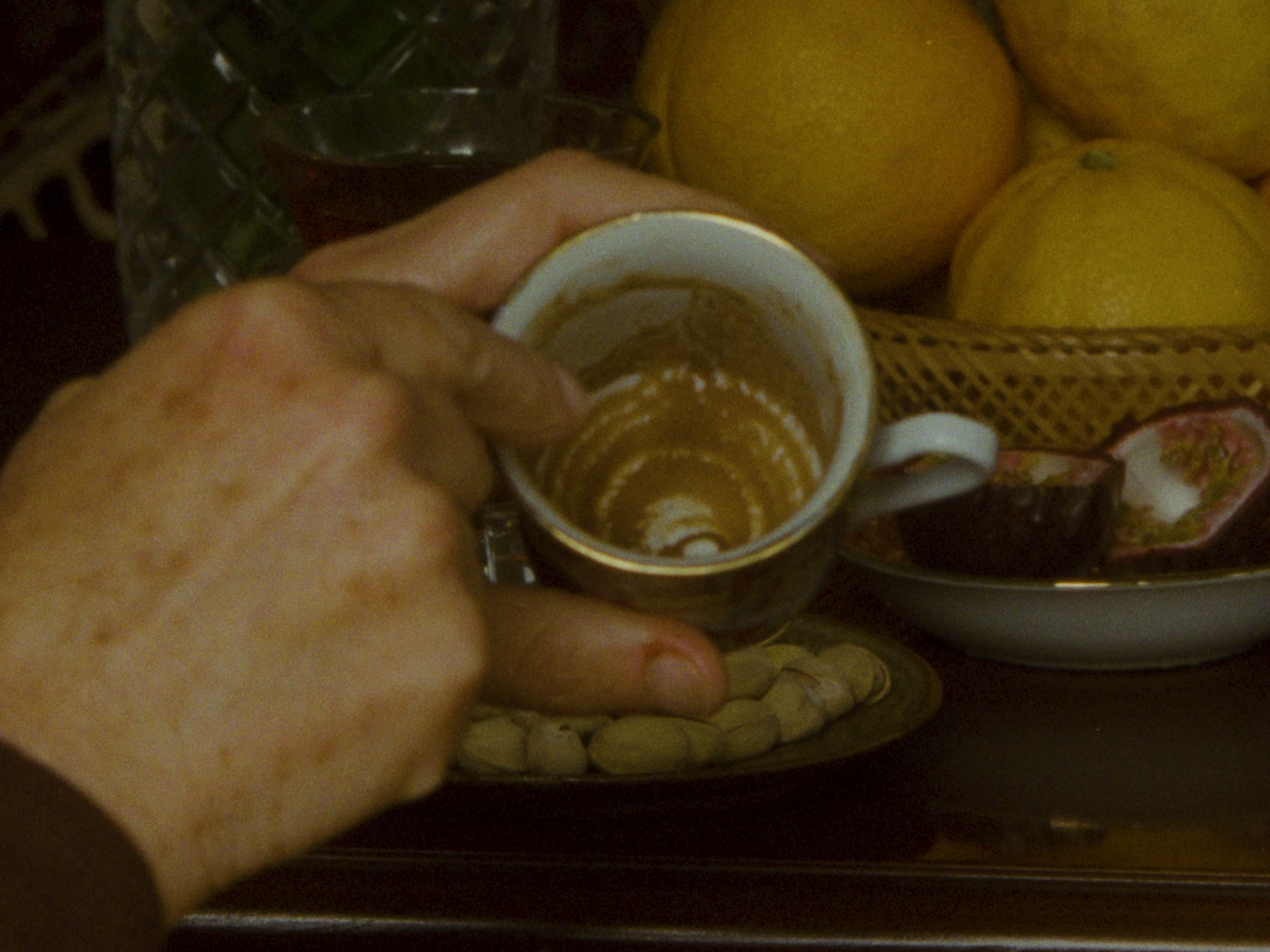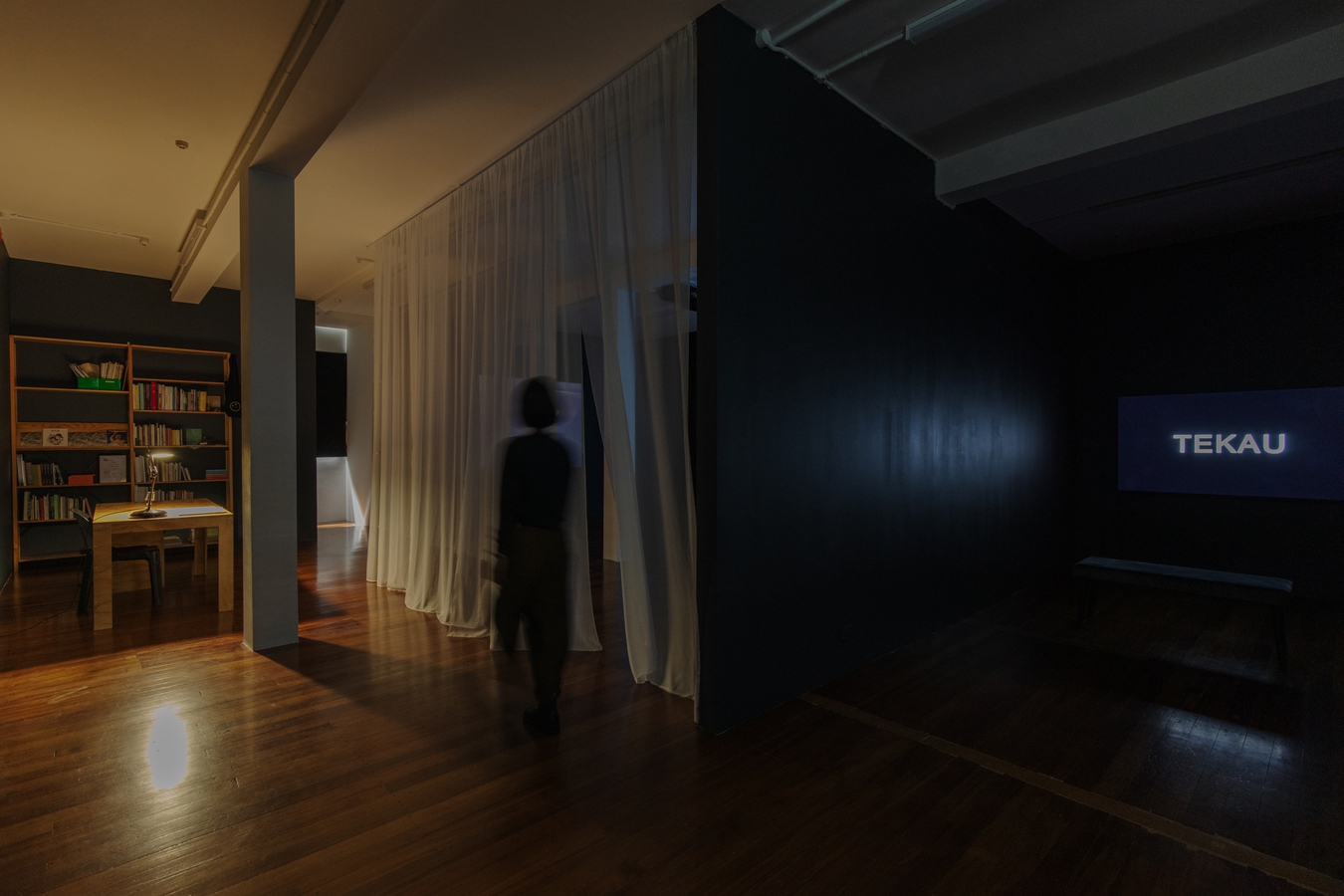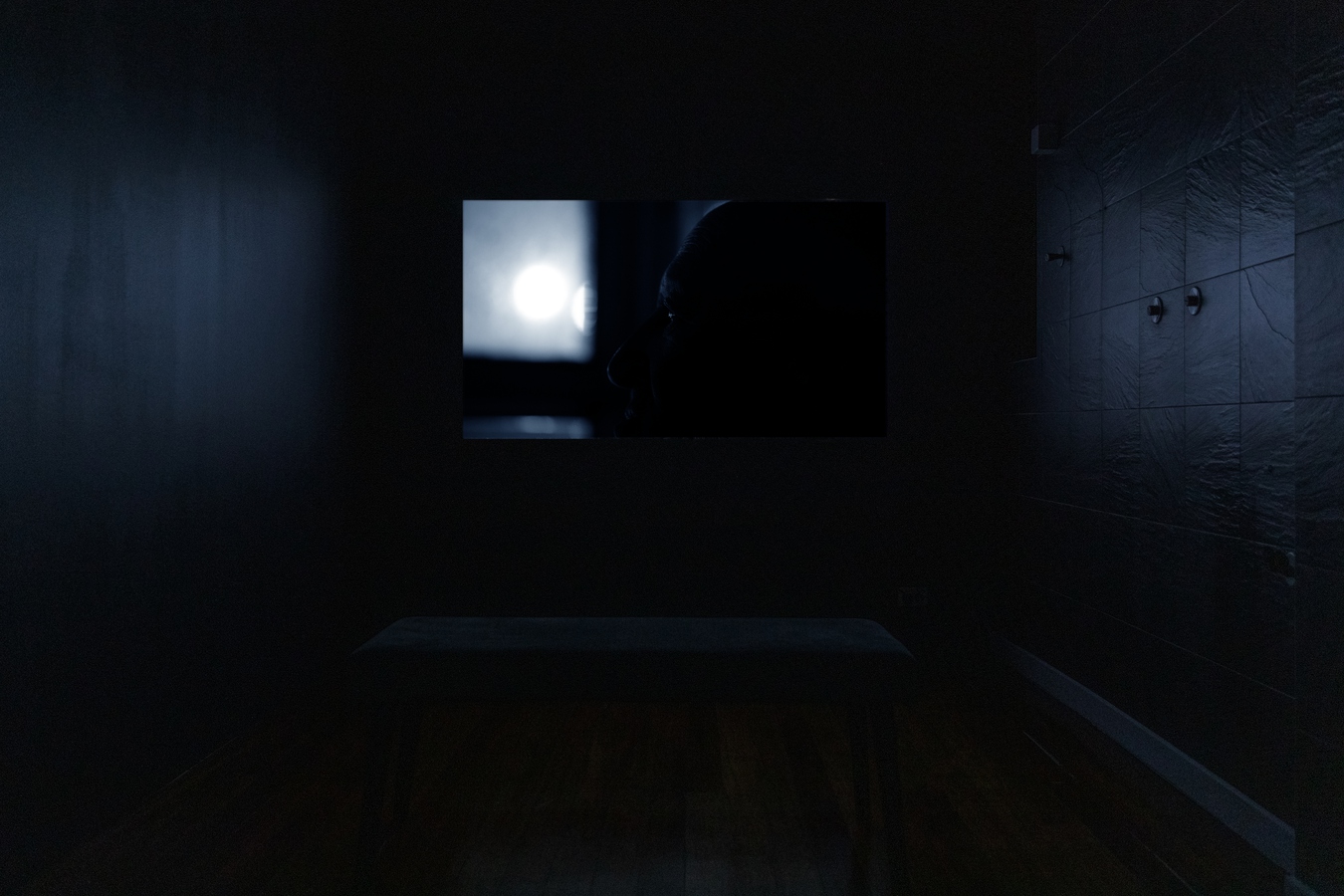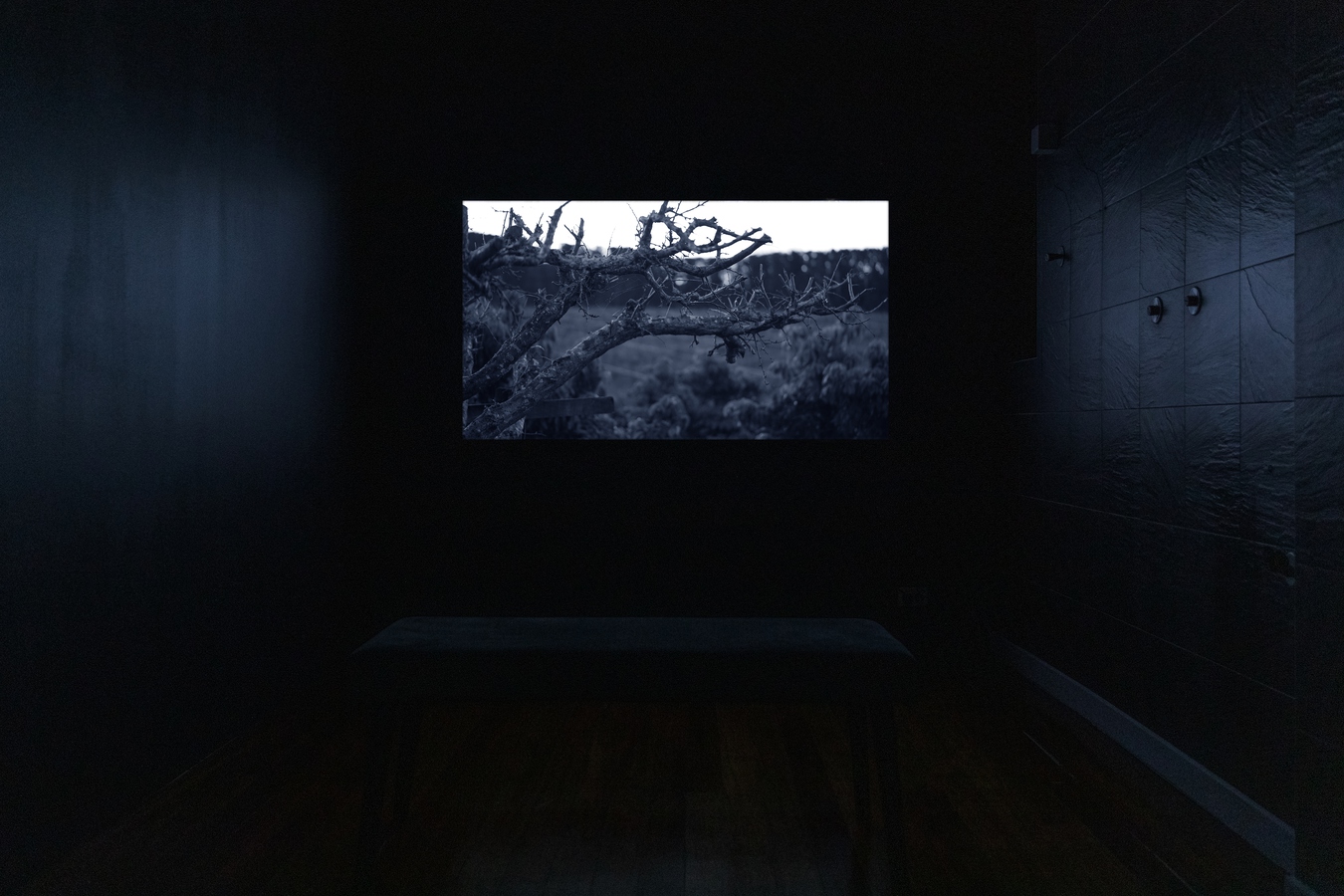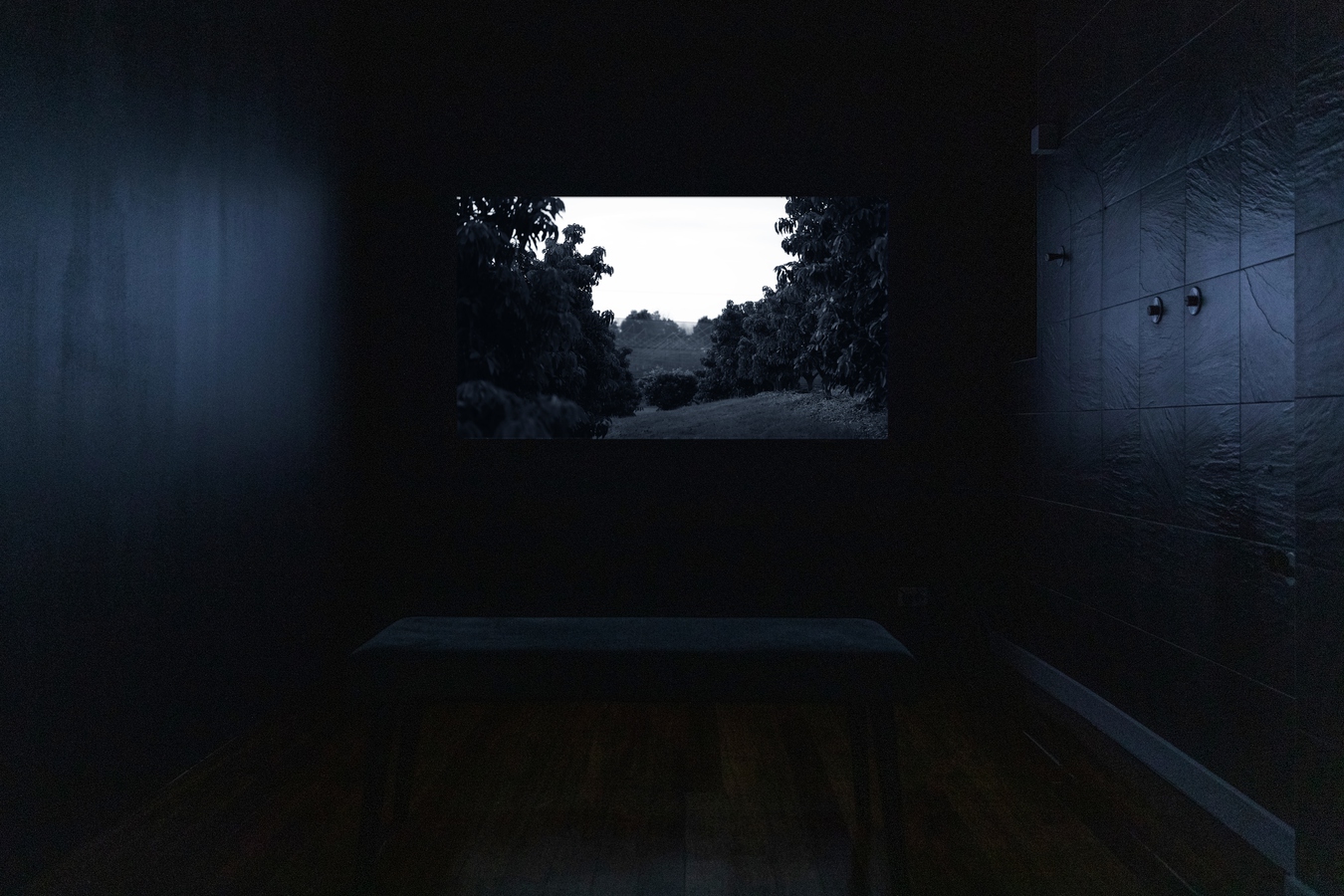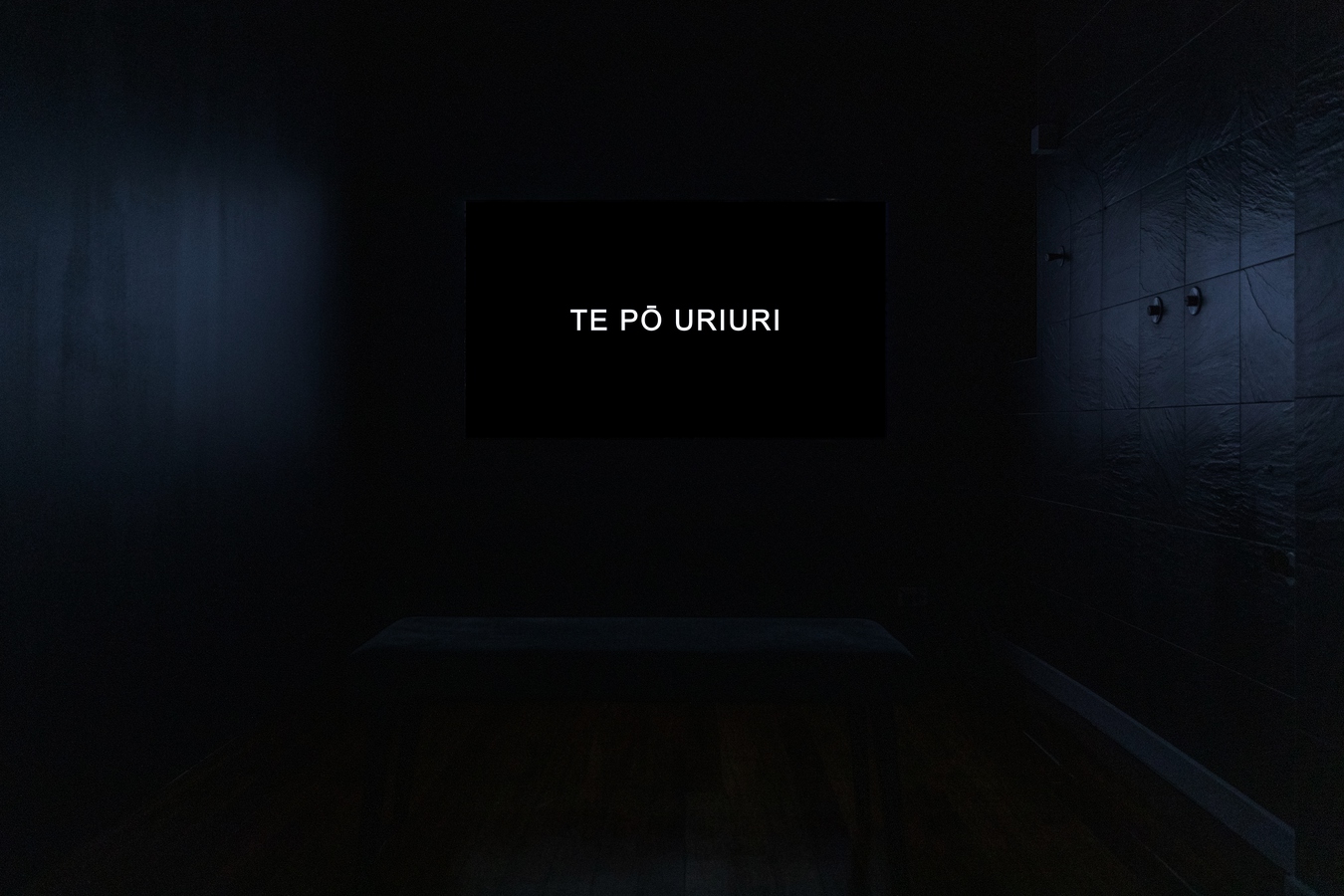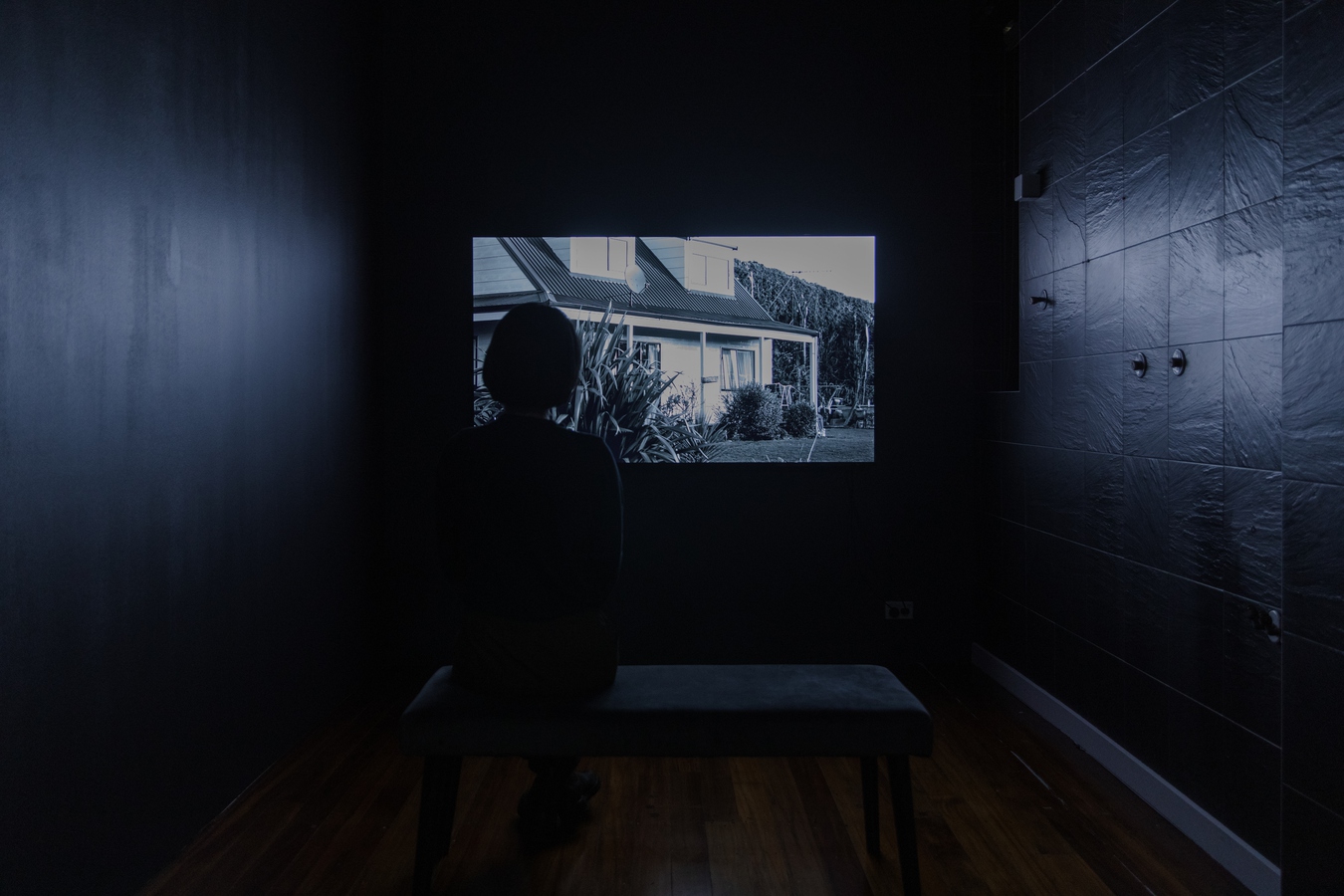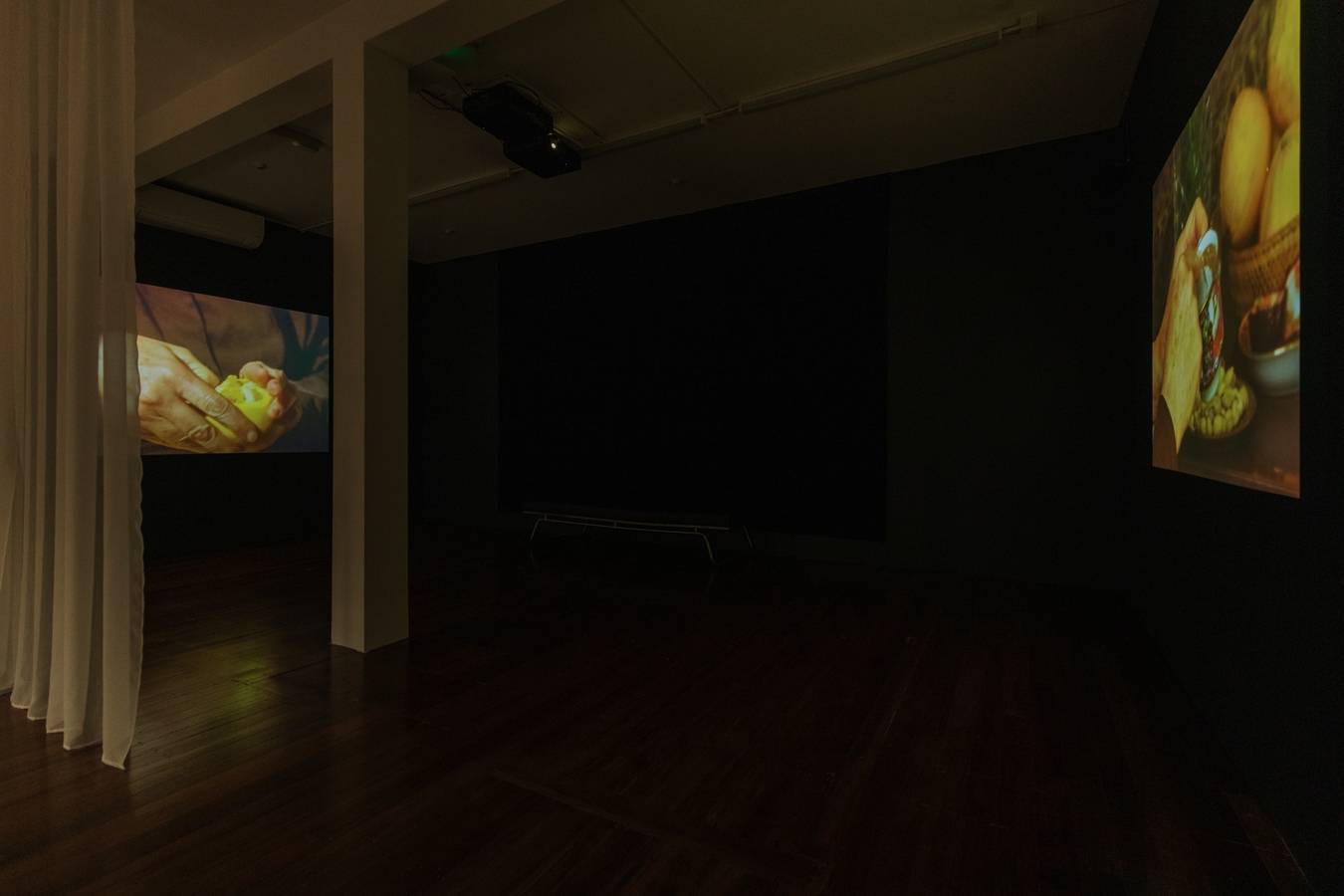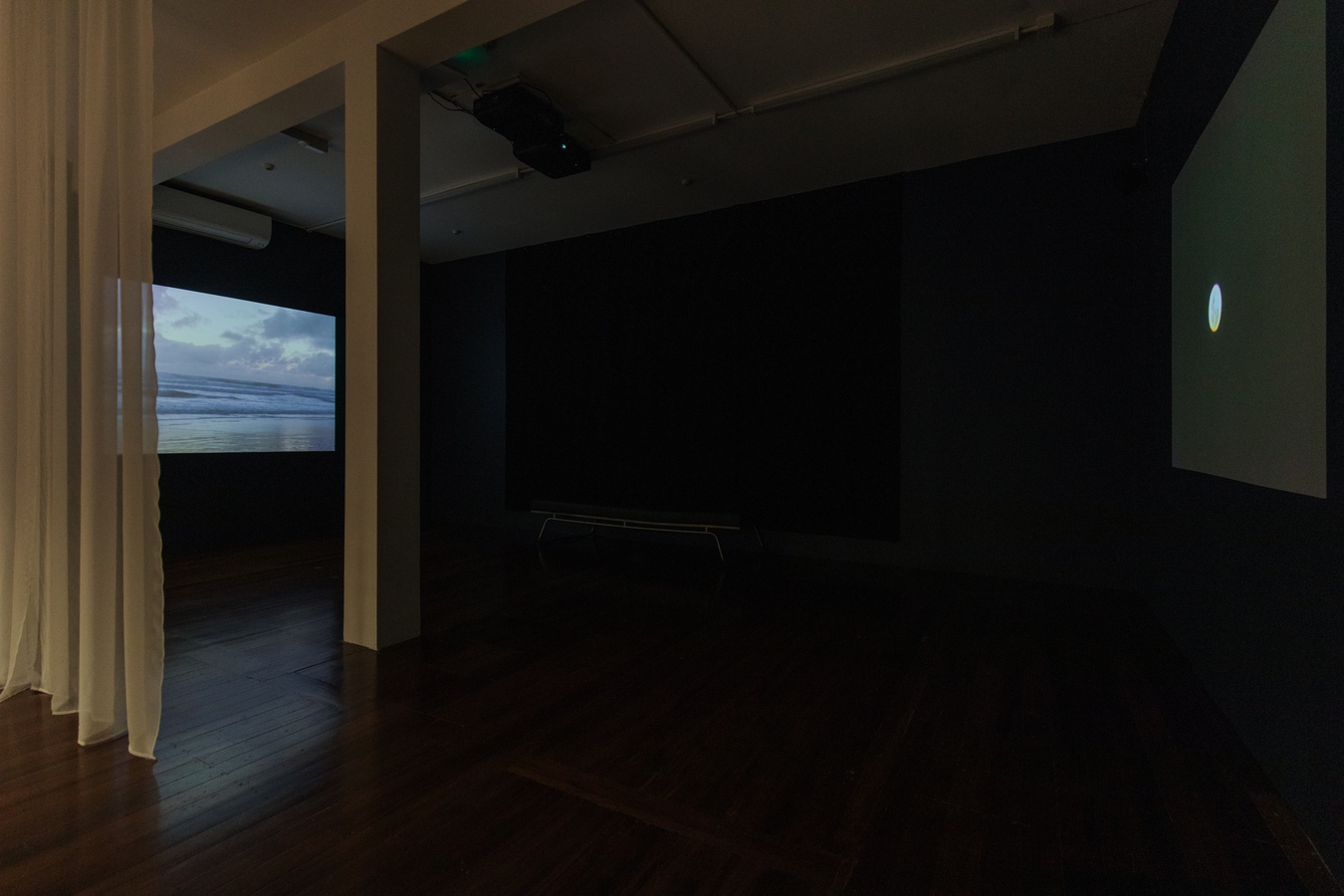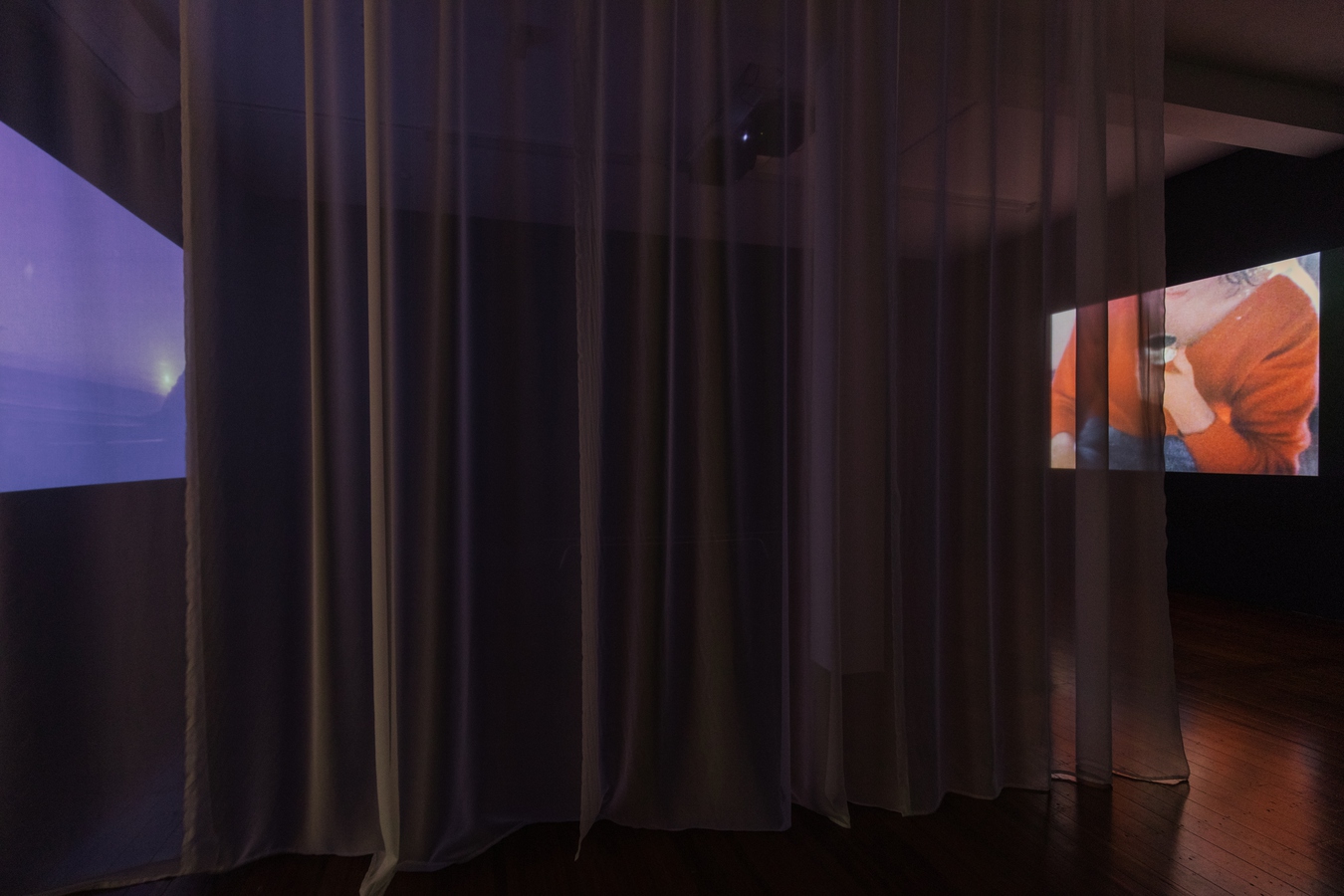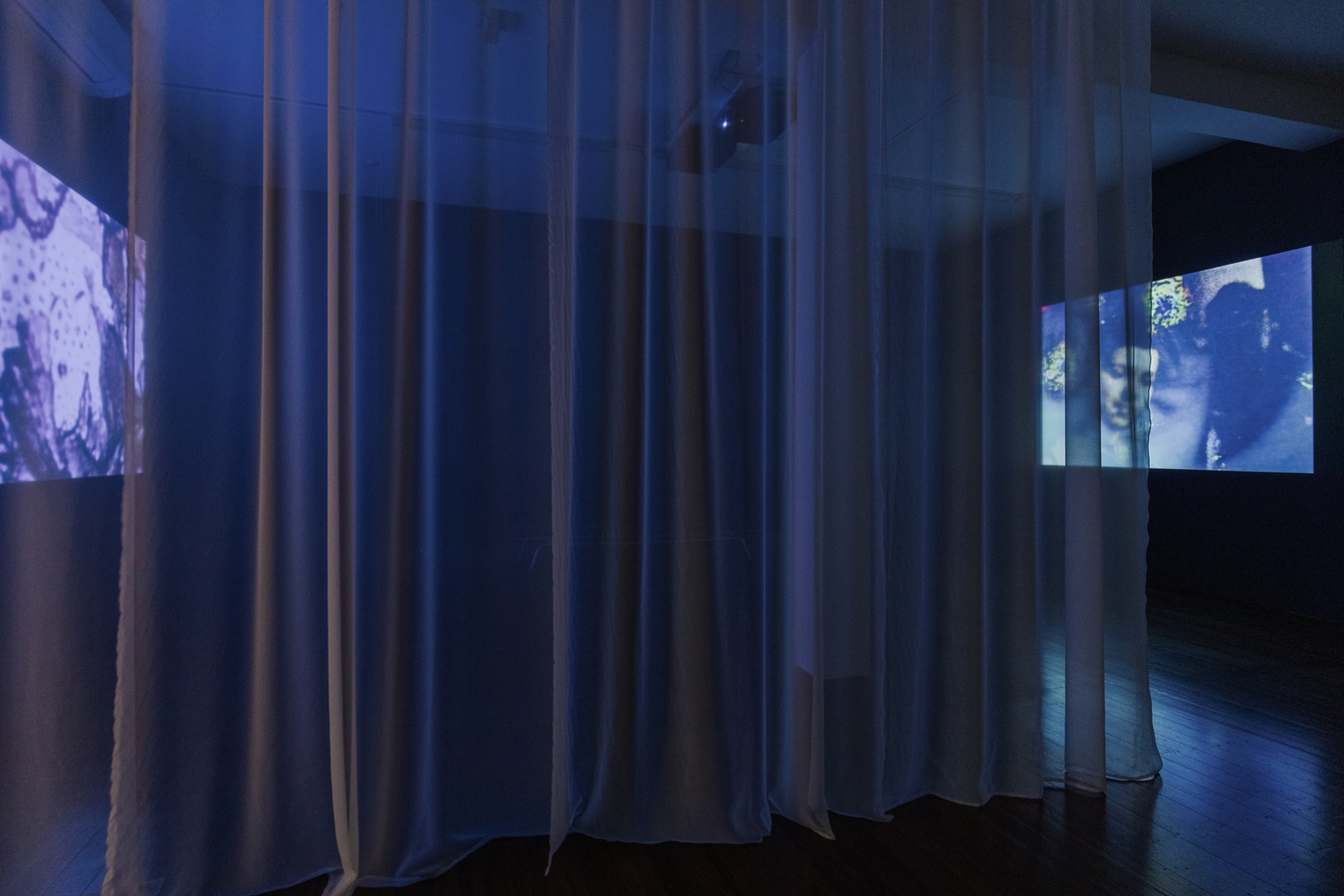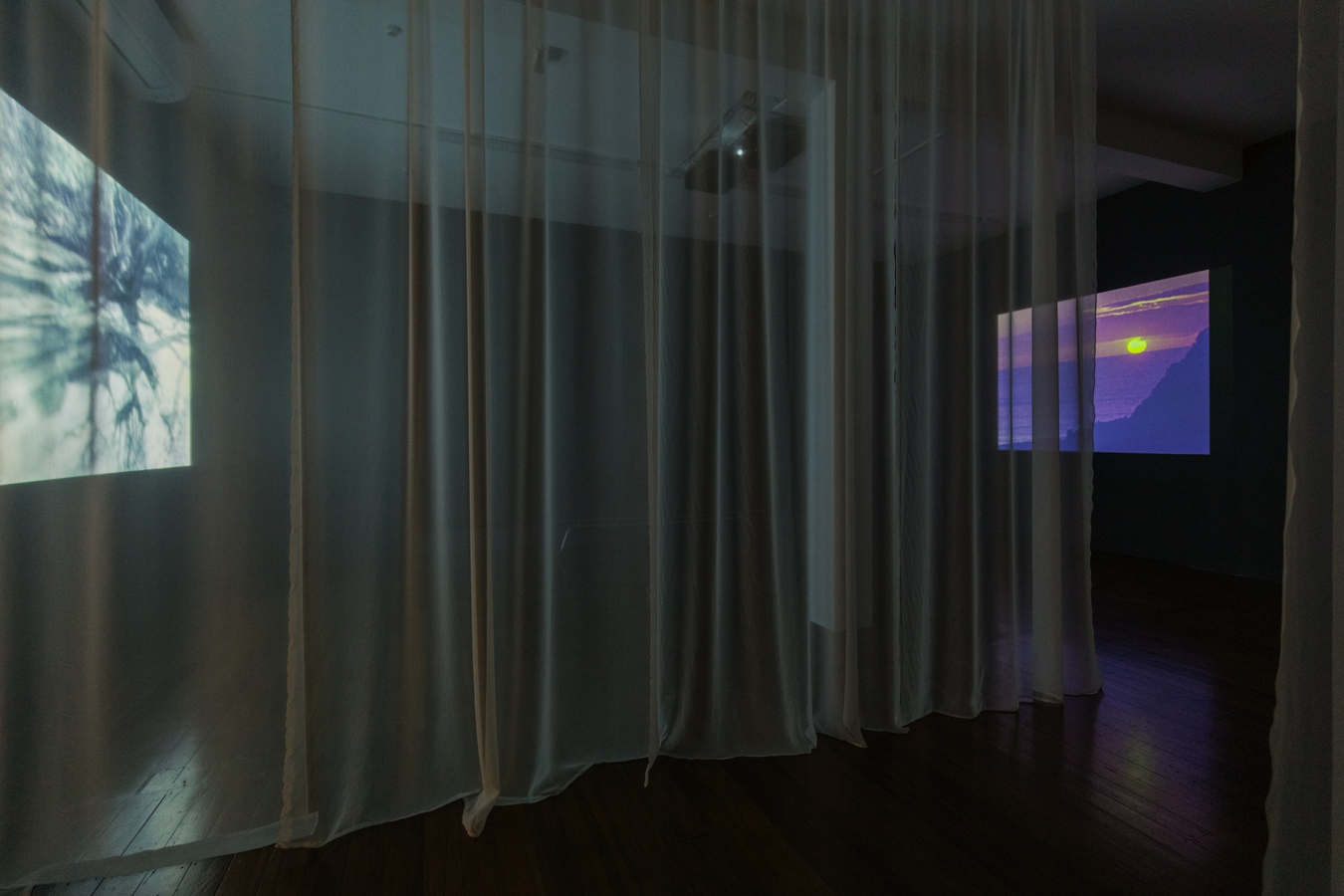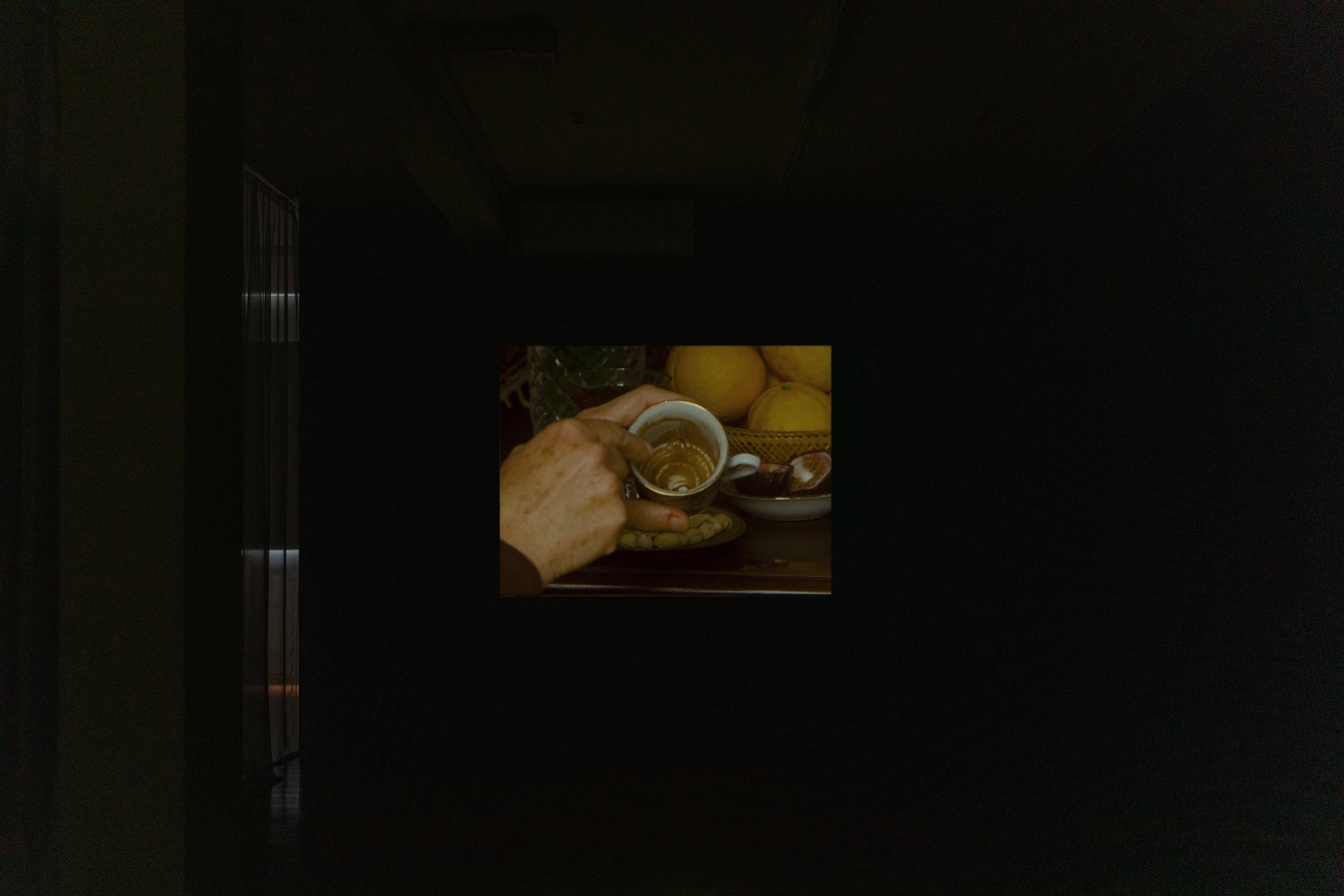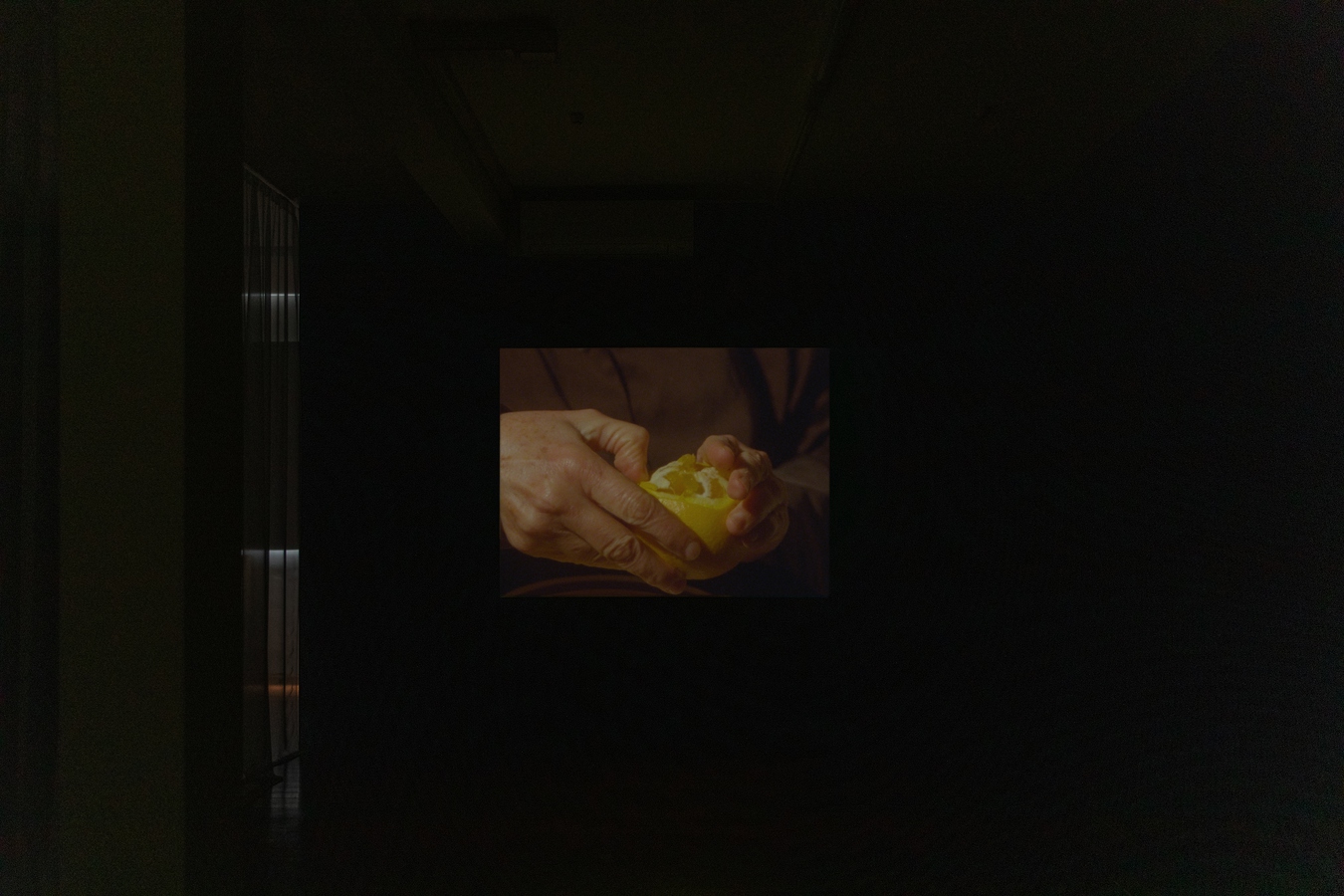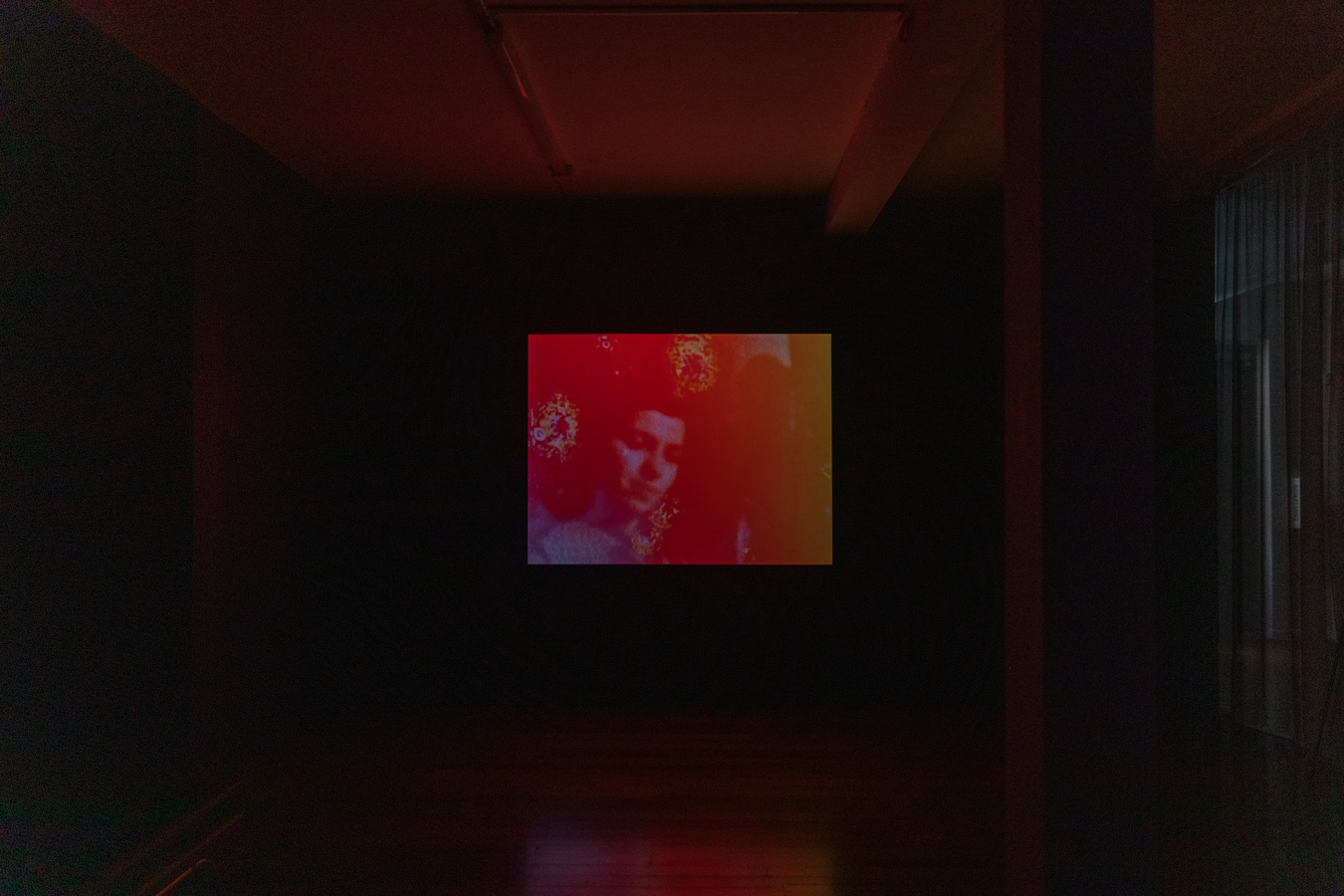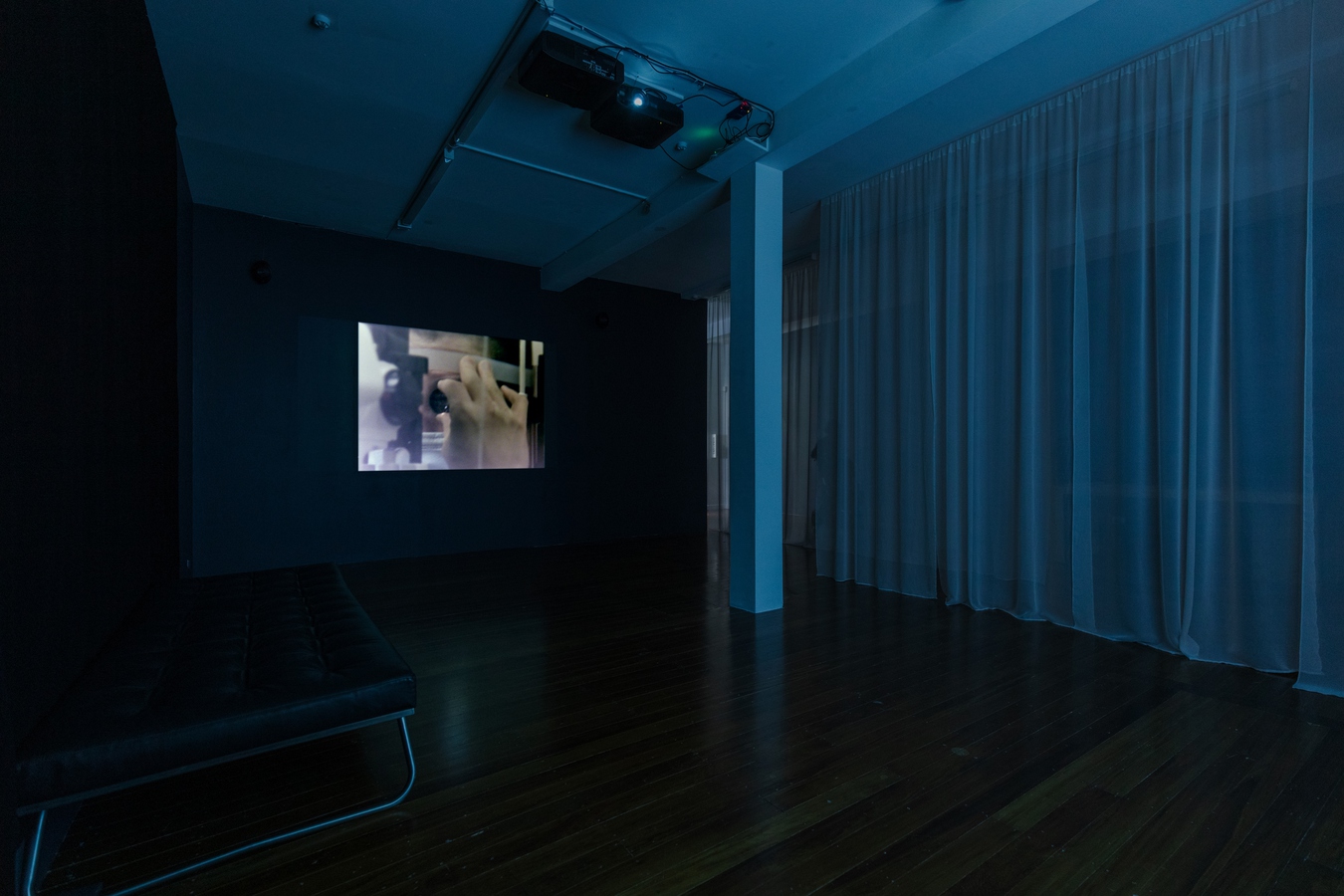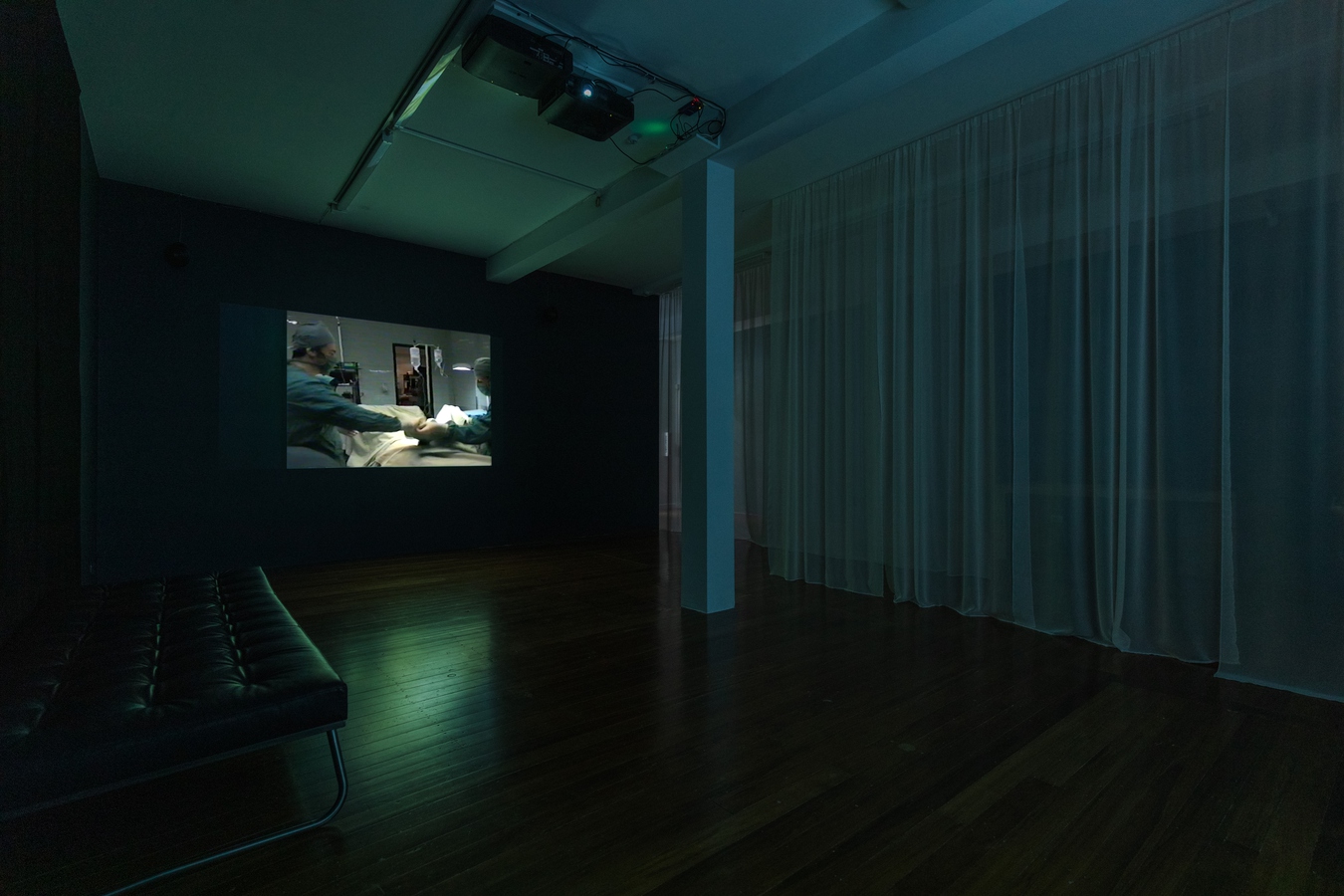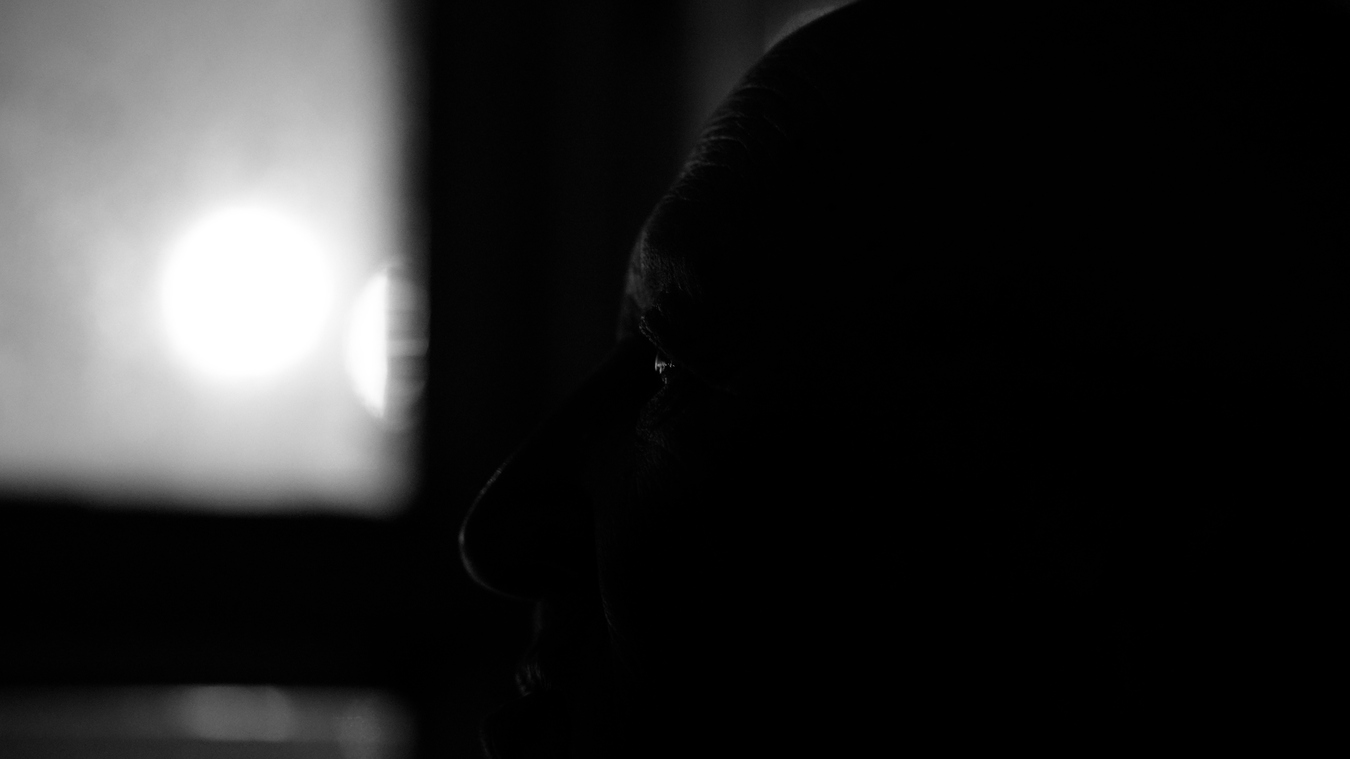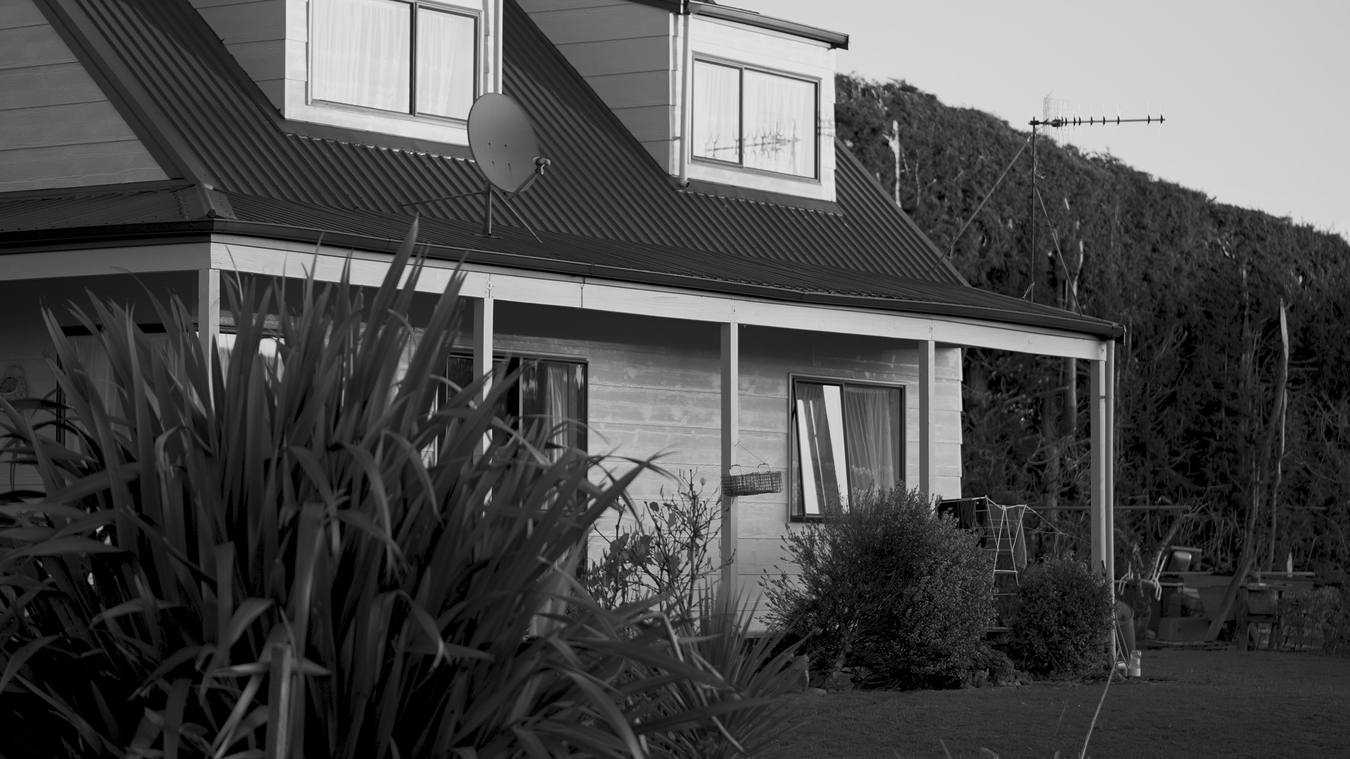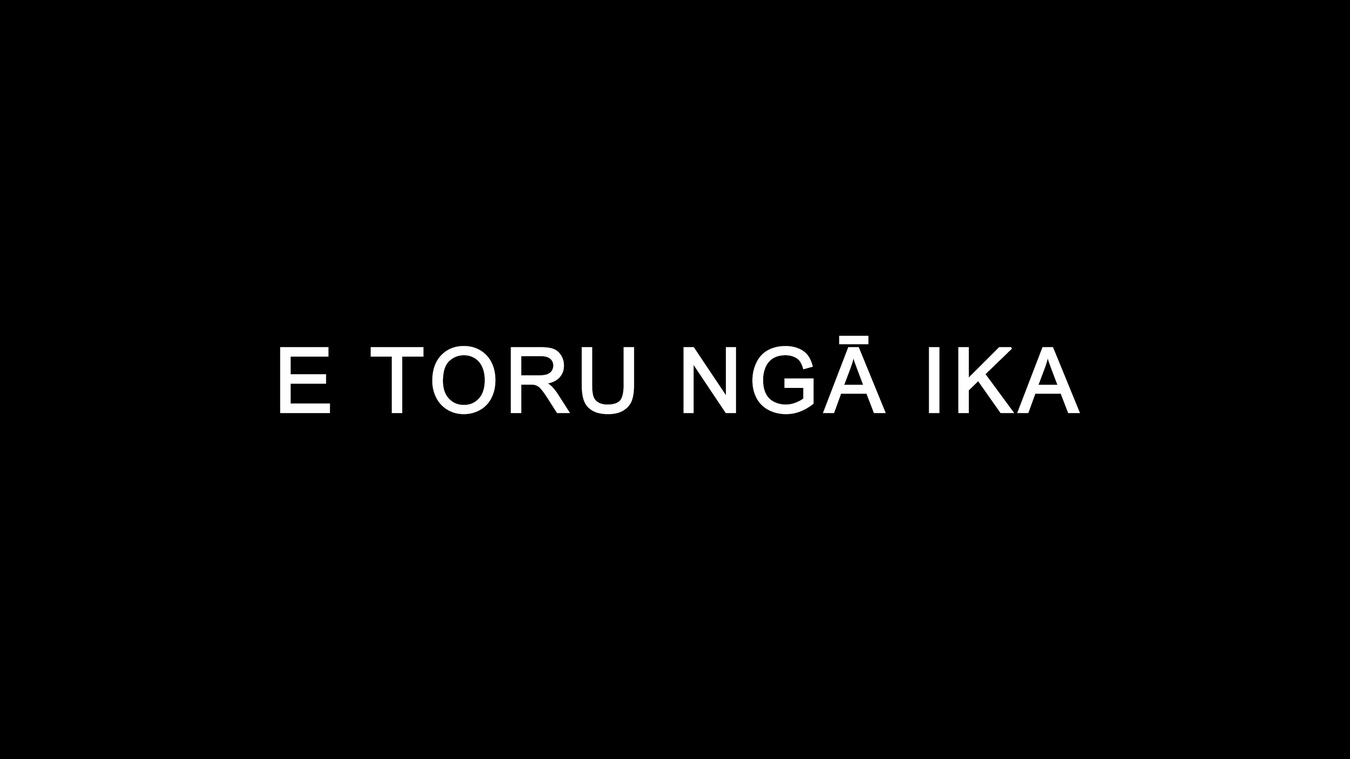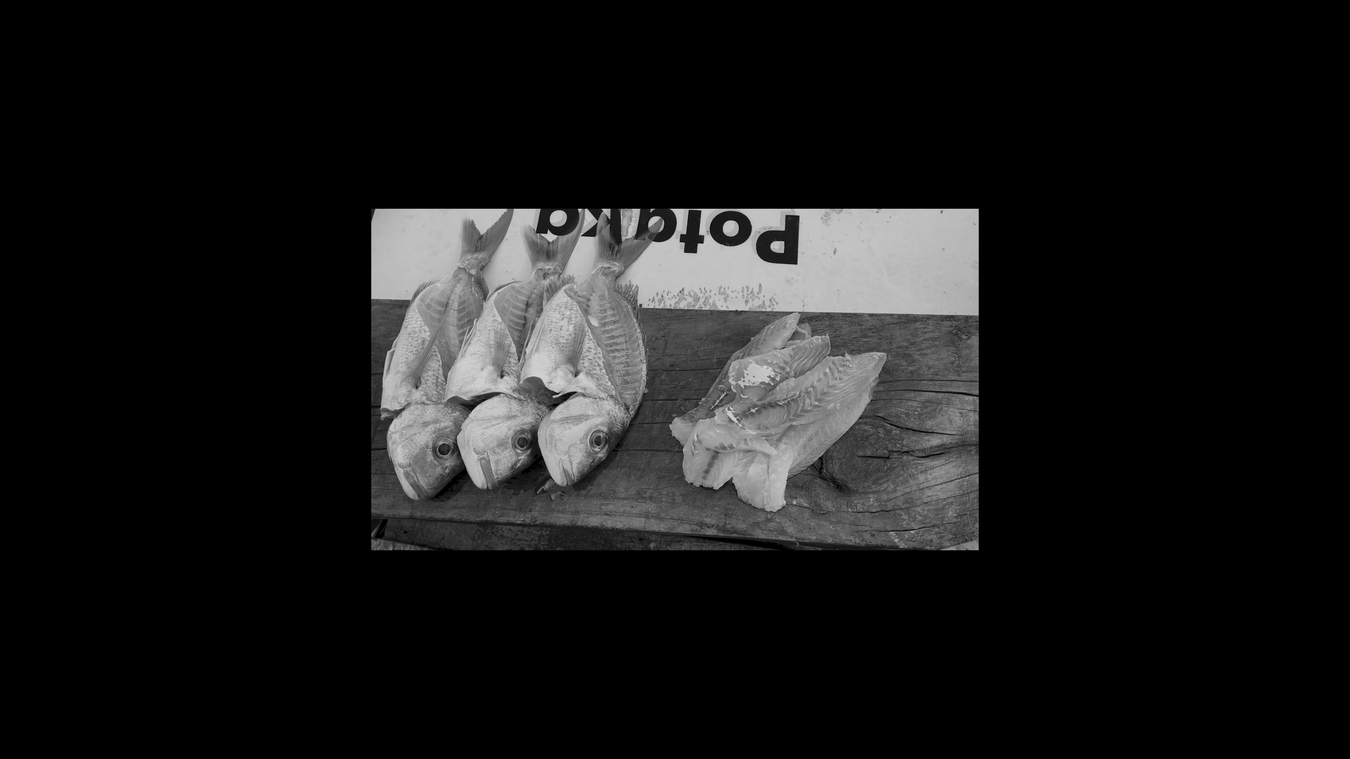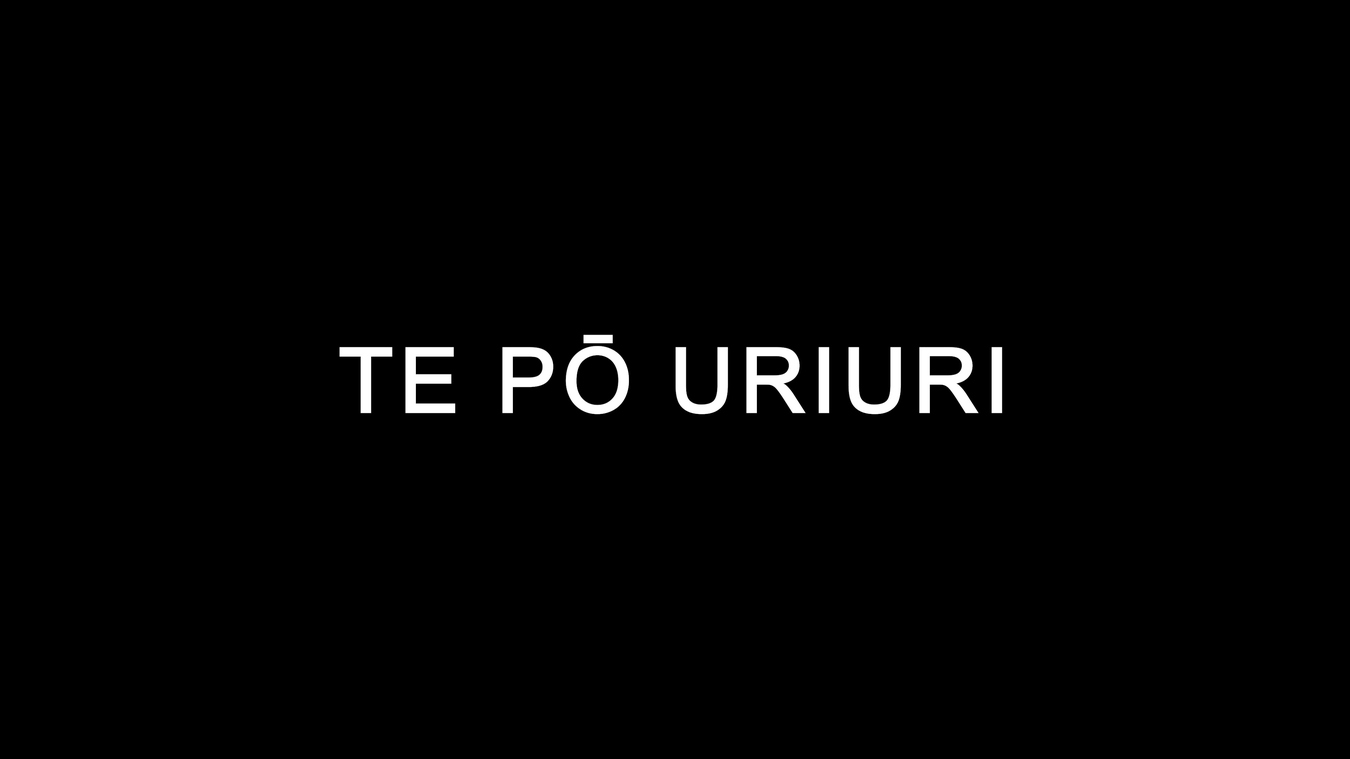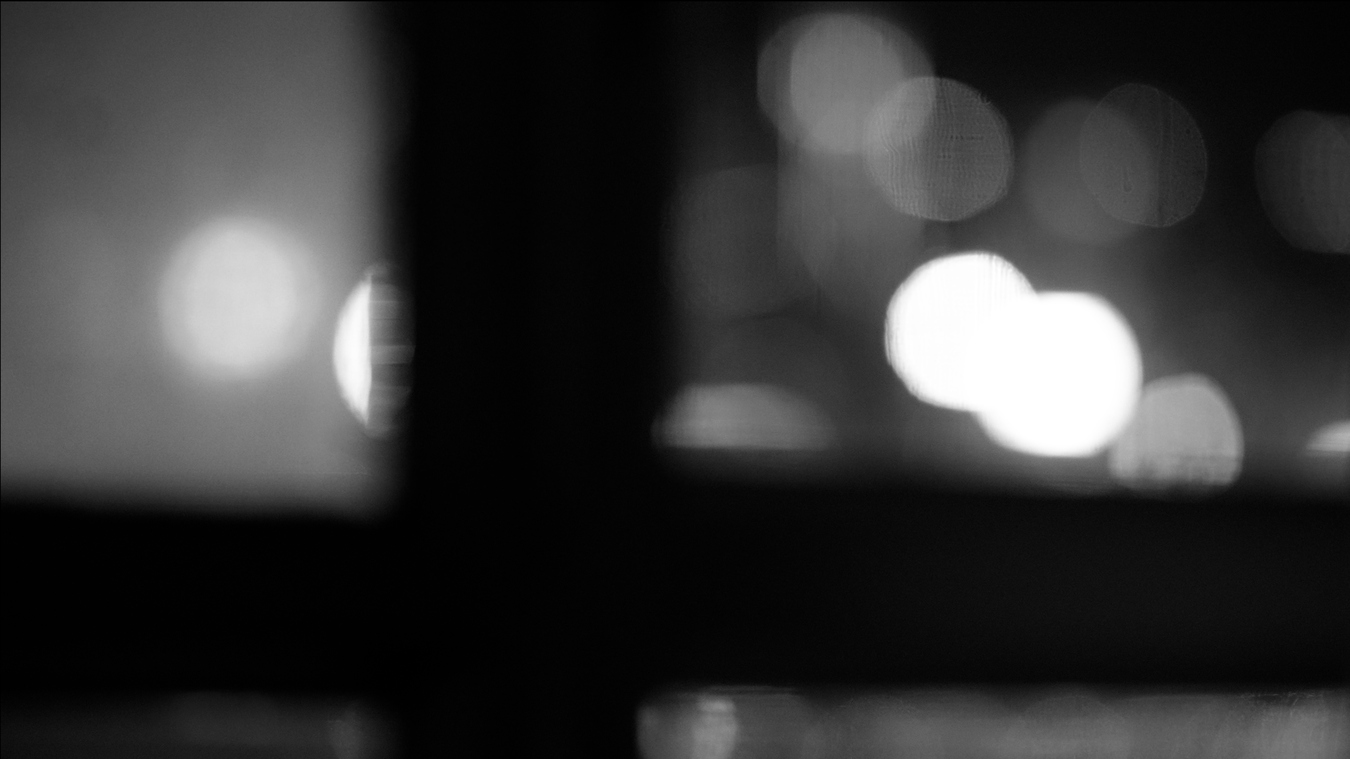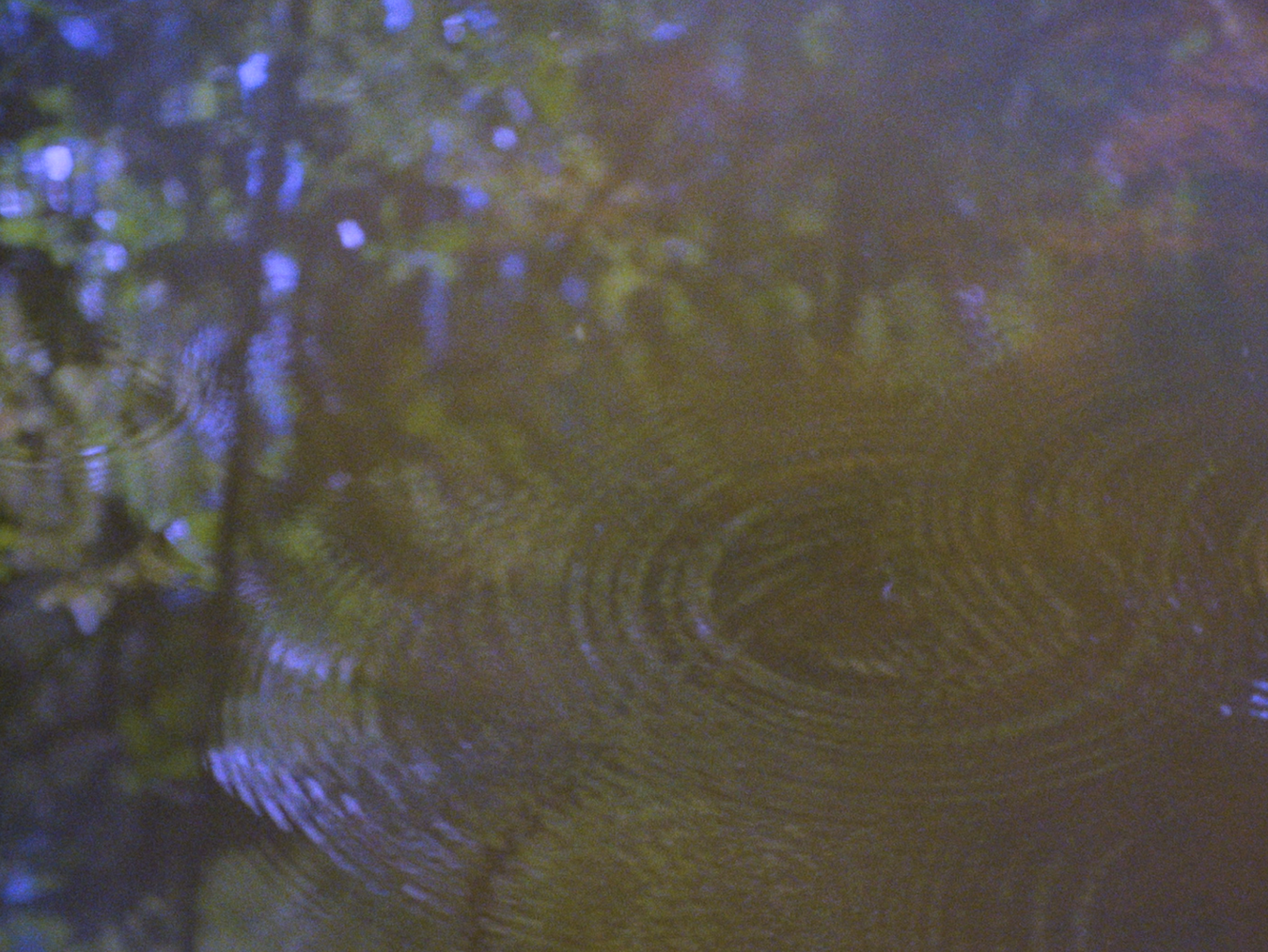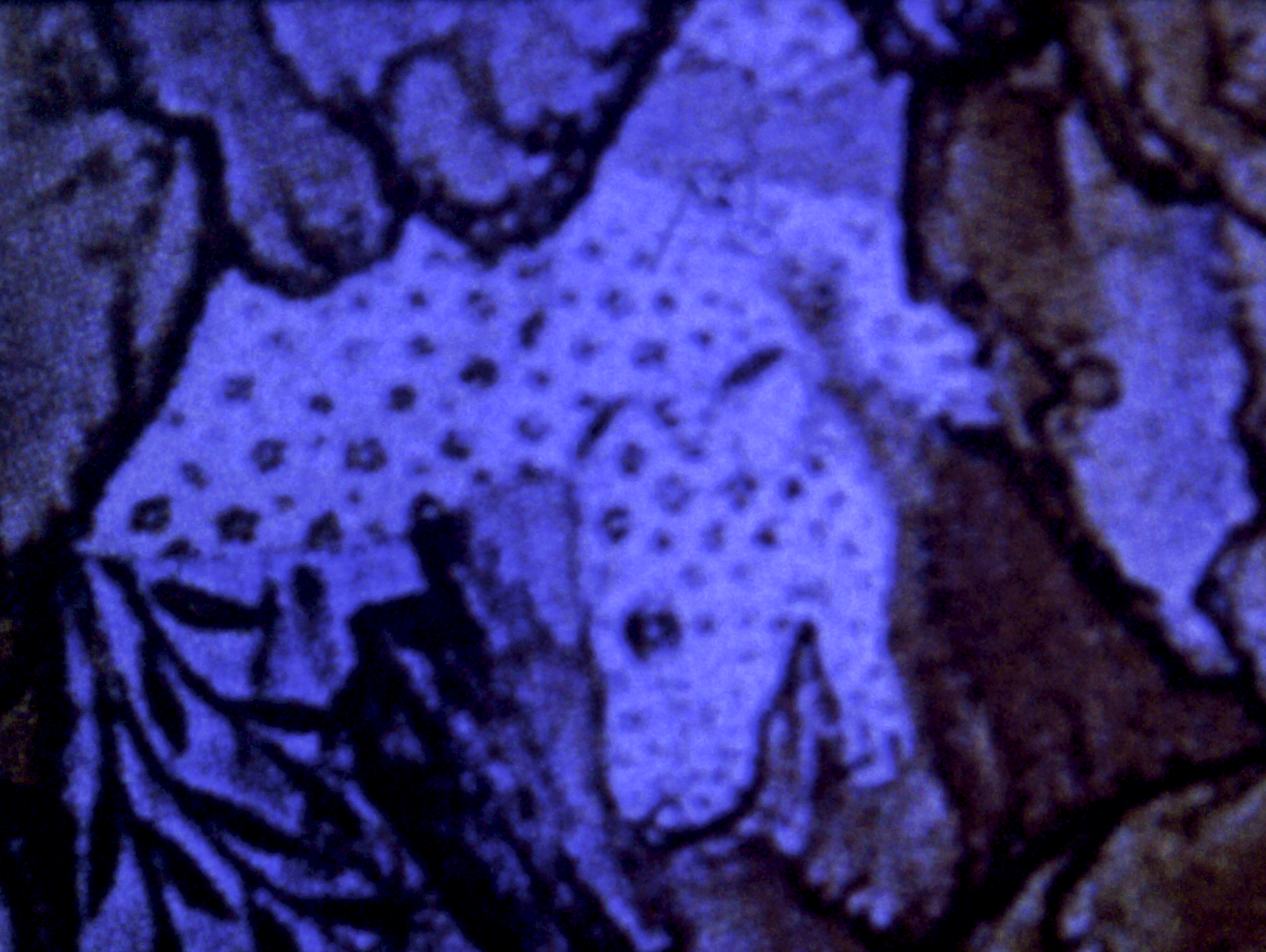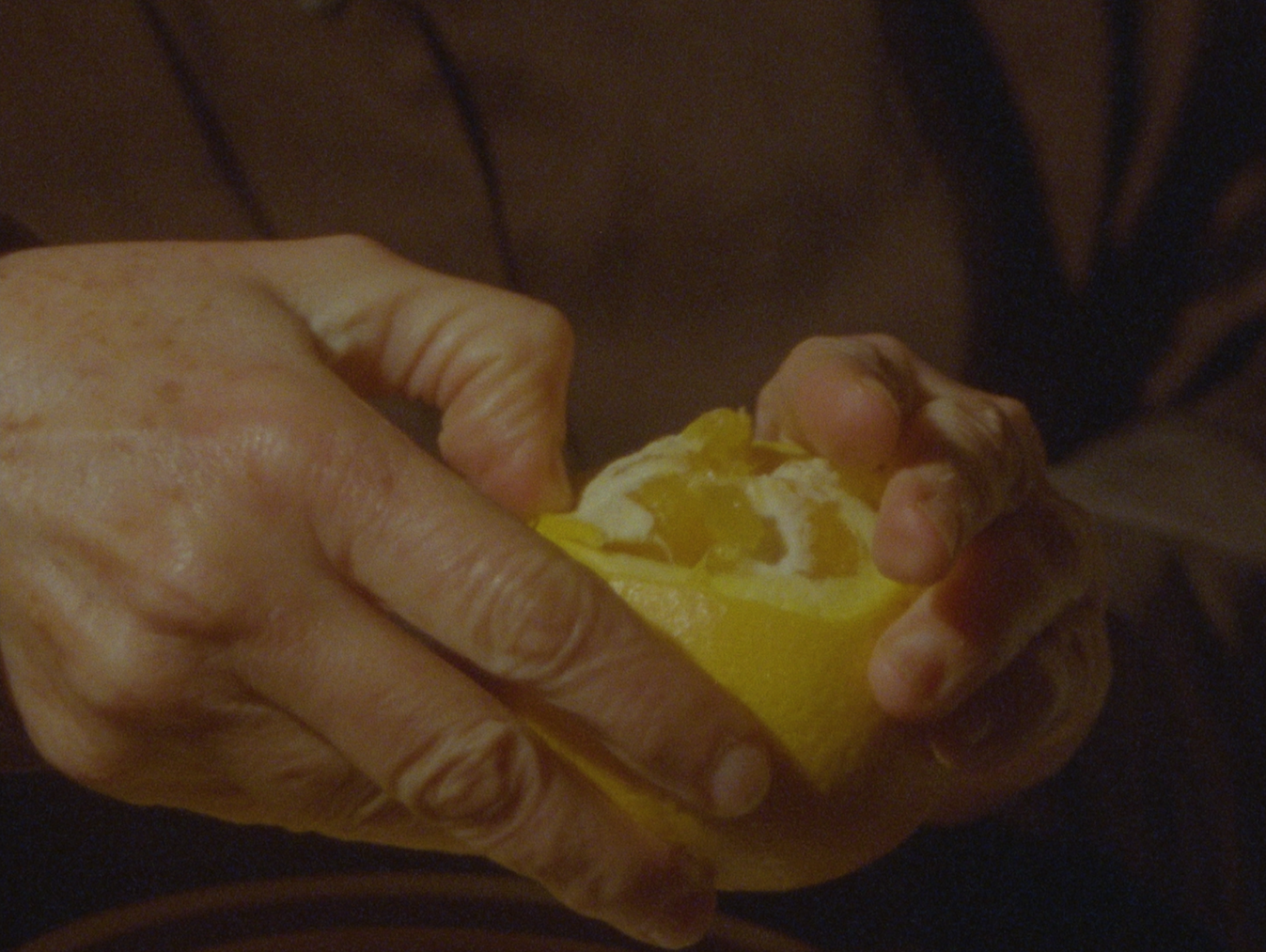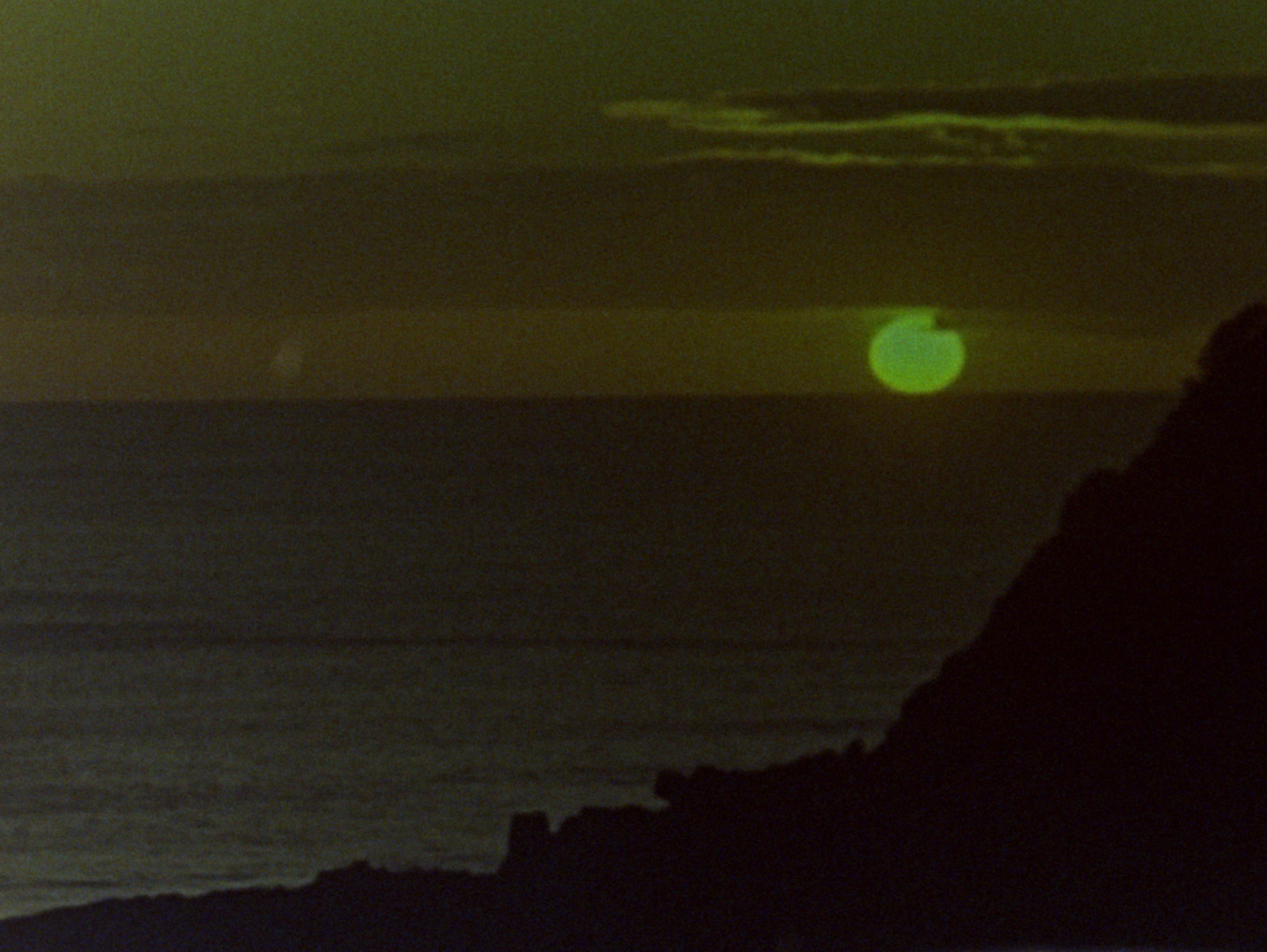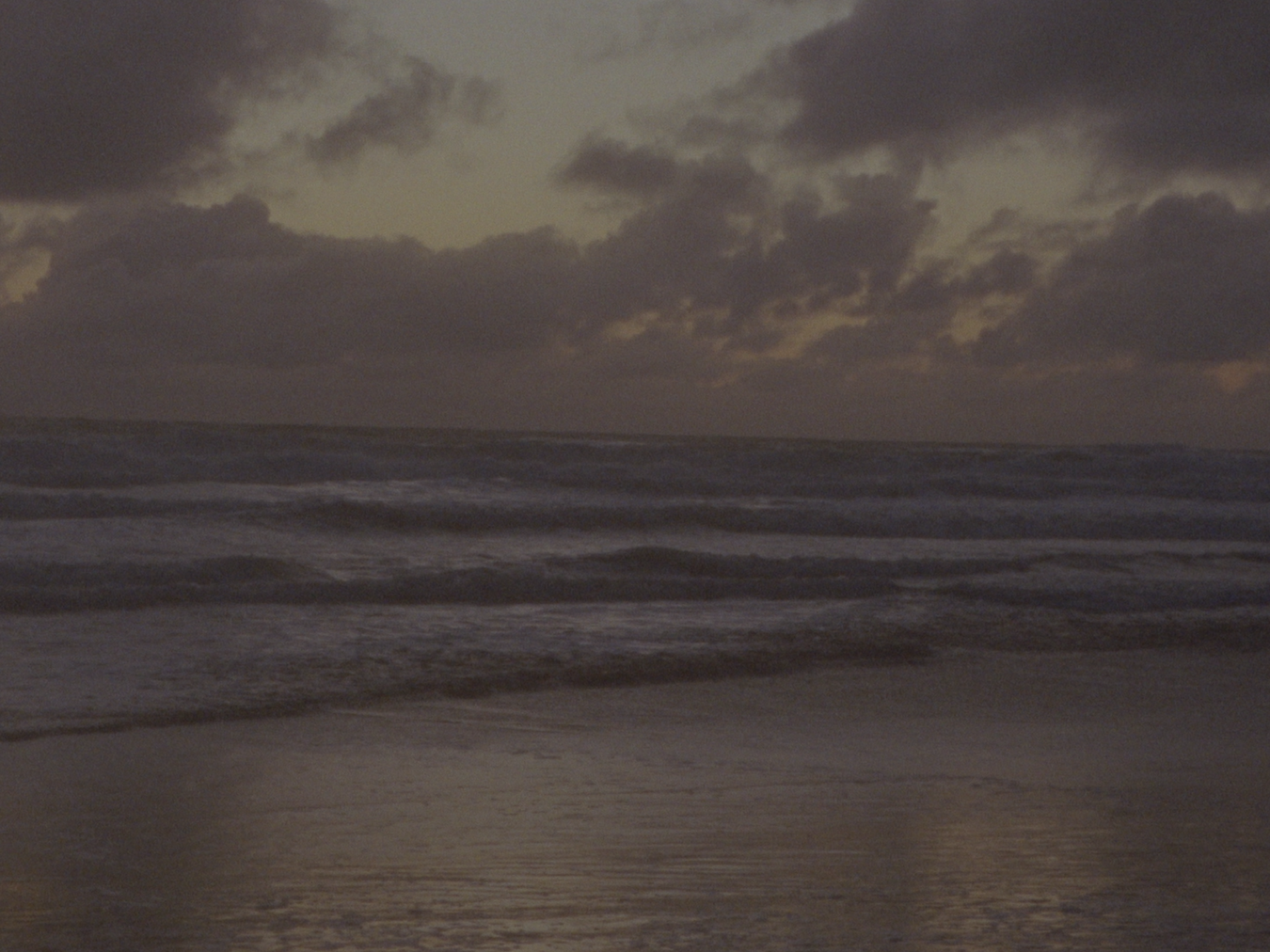Selina Ershadi and James Tapsell-Kururangi
My throat/a shelter
27 Oct — 10 Dec 2023
Selina Ershadi and James Tapsell-Kururangi
My throat/a shelter
Curated by Amy Weng
Whakatau and opening: Friday 27 October, from 5:30pm
Exhibition runs 27 October – 10 December 2023
A selection of Palestinian and Indigenous short films will be screened on opening night at 6:30pm. Koha is welcome, with all proceeds from the screening going towards UNRWA emergency aid in Gaza. Full programme here.
My throat/a shelter is an exhibition of two new experimental films by Selina Ershadi and James Tapsell-Kururangi. The exhibition is situated in embodied and intangible systems of knowledge, with the artists drawing on family narratives documented in oral histories, home videos, material portents and screen histories. Building upon existing film works that excavate maternal and paternal lineages, the works in this exhibition compose an elliptical inquiry on time, vision, memory and language as non-linear and haptic.
Guided by omens, voices and visions, Ershadi’s two-channel film چشم چشمه , 2023, brings together fragments from the artist’s family archive with footage captured while learning to see through the dim viewfinder of a 16mm Bolex camera. Filmed in part while accompanying her mother at an eye clinic in Tāmaki, Ershadi’s work explores various modes of seeing, documenting and recollecting as the eye loses dominion.
چشم چشمه, in its Farsi form, asks the viewer to engage in a process of translation. The title evokes a relationship between vision and water: that which fundamentally sustains us. This notion is reflected in the film’s many poetic layers which piece together vignettes from numerous material sources. چشم چشمه draws inspiration in part from a VHS tape in Ershadi’s family archive which captures a childhood visit to Tehran and was taped over a wildlife documentary. This material acts as a palimpsest, entwining two divergent fields within Bolex film history: amateur home video and nature film-making. The tape provides an armature for the emergent work, allowing for prophetic forms of storytelling.
Grainy footage of coastal and wetland vistas and carefully observed moments of divinations carried out by disembodied hands situates the work in sensorial realms and in different scales of vision. Superimposed footage of photographs showing childhood and motherhood across generations are shot using a macro lens, searchingly bringing the camera into near contact with a distant past. Epistolary texts and other material sources reveal the passage of time through physical wear and imperfect chemical processing. In this way, the work exposes the corruptibility of film and visual archives as an enduring document. The fiery ‘O’ of a sunset is echoed in scenes of Ershadi’s mother at an ophthalmologist's refractor, foregrounding the impermanence and indeterminacy of vision. These sit alongside rare footage of a Caesarean section performed in Tehran, providing an aperture into an anomalous moment of Iranian history when documenting such procedures was permissible. The scene serves as a punctum, entangling the body/wound, and eye/lens into inextricable relation. In these remnants, the corporeality of memory and visual archives asserts itself.
The sonic register of the film is composed by sound artist Frances Libeau. It comprises aural textures gleaned from Ershadi’s personal archives, and field recordings subjected to gentle electroacoustic interventions. These include an impromptu performance of a Hafez’s ghazal (ode) called Remembrance accompanied by the tār (a stringed instrument) in a family living room, as well as birdsong, translations and a fractured reading of Earthly Verses from a cassette tape by Iranian poet and filmmaker Forough Farrokhzad that has been distorted over time. The viewer encounters the work by moving in a ‘S’ shape between two silk curtains into the main gallery where the film is projected on opposing walls. Following the form of an ouroboros, a symbol which appeared vividly to Ershadi in a fāl, a coffee reading read by her mother, the work moves in two directions at once unsettling linear perception through a cyclical enfolding of veiled, flickering transmissions. These fragments suggest how archives are susceptible to omission and disintegration, and how archival traces might still reverberate in the present.
Retracing the footsteps of his tūpuna across multiple continents and generations, Tapsell-Kururangi’s film, Homman, 2023, is a meditation on temporality and mortality. Using the story of Maui and Hine-nui-te-pō as a scaffold, the work traces an itinerant path through Hong Kong, Copenhagen, and finally to the artist’s father’s home in Paengaroa. The work is envisioned as a conversation between the artist and his 80-year-old father who looks back upon his life and impending death, surfacing the mythologies, histories and places dense with meaning.
In researching for this work, Tapsell-Kururangi journeyed to Hong Kong, a city where his father lived and worked for a few years. The film begins in a darkened room, lingering on the barely discernible profile of the artist’s father, Homman, who looks towards an interlocutor placed out of view. Through a window in the background, the glow of an urban cityspace suggests nighttime, the realm of Hine-nui-te-pō. Later, the film takes us sonically to Copenhagen through the church bell of Vor Frelsers Kirke where his tupuna Hans Homan Falk was born and baptised. These haerenga, or returns, parallel Maui’s quest for immortality by reversing the act of birth. In one account given by Poia Rewi, Maui and Hine-nui-te-pō argue about the necessity of the permanence of death. This episode becomes one of the first examples of whaikōrero.1 In Homman, this purākau becomes a gateway into an imagined exchange or whaikōrero between both real and semi-fictional characters: between the artist’s father and the maiden of the night, between Tapsell-Kururangi and a fictionalised version of his father.
Like Ershadi’s film, recurring and fragmented imagery are drawn upon from a range of sources: 70s Hong Kong cinema, ad hoc cell phone capture, and carefully composed HD footage. The film entangles lyrical imagery and verse, condensing space and time. Homman reappears in the work, roughly the same age as the artist, enigmatically as an assassin in a Bruce Lee film. Pollarded fruit trees in an orchard in Paengaroa echo a painting of bare branches in Tapsell-Kururangi’s childhood home. Tender footage of Homman filleting fish is offered up, alongside other recollections, as a sum of his life. These ordinary moments (kotahi te whare/e toru ngā ika/he uru huarākau) are shored up against the unknowable and untranslatable (te pō uriuri/te pō tangotango) and the relentless marking of time. In Homman, the subject hovers on the periphery of the senses, never coming fully into view or resolution, bringing into proximity absence and the potential for failure.
My throat/a shelter speculates on peripheral and inhabited understandings of time and history, of stories that reside within the body or the throat, and resist easy articulation. In both Ershadi and Tapsell-Kururangi’s films, the artists wrestle with language, vision and translation, asking how might we give a full account whilst refusing to make one’s history legible, to signal the specificity and elusiveness of lived experience whilst maintaining space for other voices. They ask, how can indeterminacy and darkness provide useful strategies of resistance, what Glissant called the right to opacity?
In embracing narrative and temporal fragmentation, the films echo what Laura U. Marks describes as a condition of intercultural cinema, where rupture experienced through exile or displacement gives rise to diffuse notions of truth. These works grapple with the potential for audiovisual media to express complex and multi-layered experience, finding resonances in the liveliness and mutability of material traces and inherited stories.
- Text by Amy Weng
1 Poia Rewi, Whaikōrero: The World of Māori Oratory (Tāmaki Makaurau Auckland: Auckland University Press, 2010), 12.
–
Selina Ershadi is an Iranian-born, Tāmaki Makaurau/Auckland-based, artist working within a lineage of experimental film forms. She holds an MFA from Elam School of Fine Arts and a BA majoring in English Literature from the University of Auckland.
James Tapsell-Kururangi (Te Arawa, Tainui, Ngāti Porou) is a curator and artist based in Tāmaki Makaurau. Recent exhibitions include Indigenous Histories, Museo de Arte de Sāo Paulo Assis Chateaubriand, Sāo Paulo, 2023; The long waves of our ocean, National Library, Pōneke Wellington, 2022; twisting, turning, winding: takatāpui + queer objects, Objectspace, Tāmaki Makaurau Auckland, 2022; and Matarau, City Gallery Wellington, Pōneke Wellington, 2022.
--
The artists would like to acknowledge Creative New Zealand for their generous support of this exhibition.


